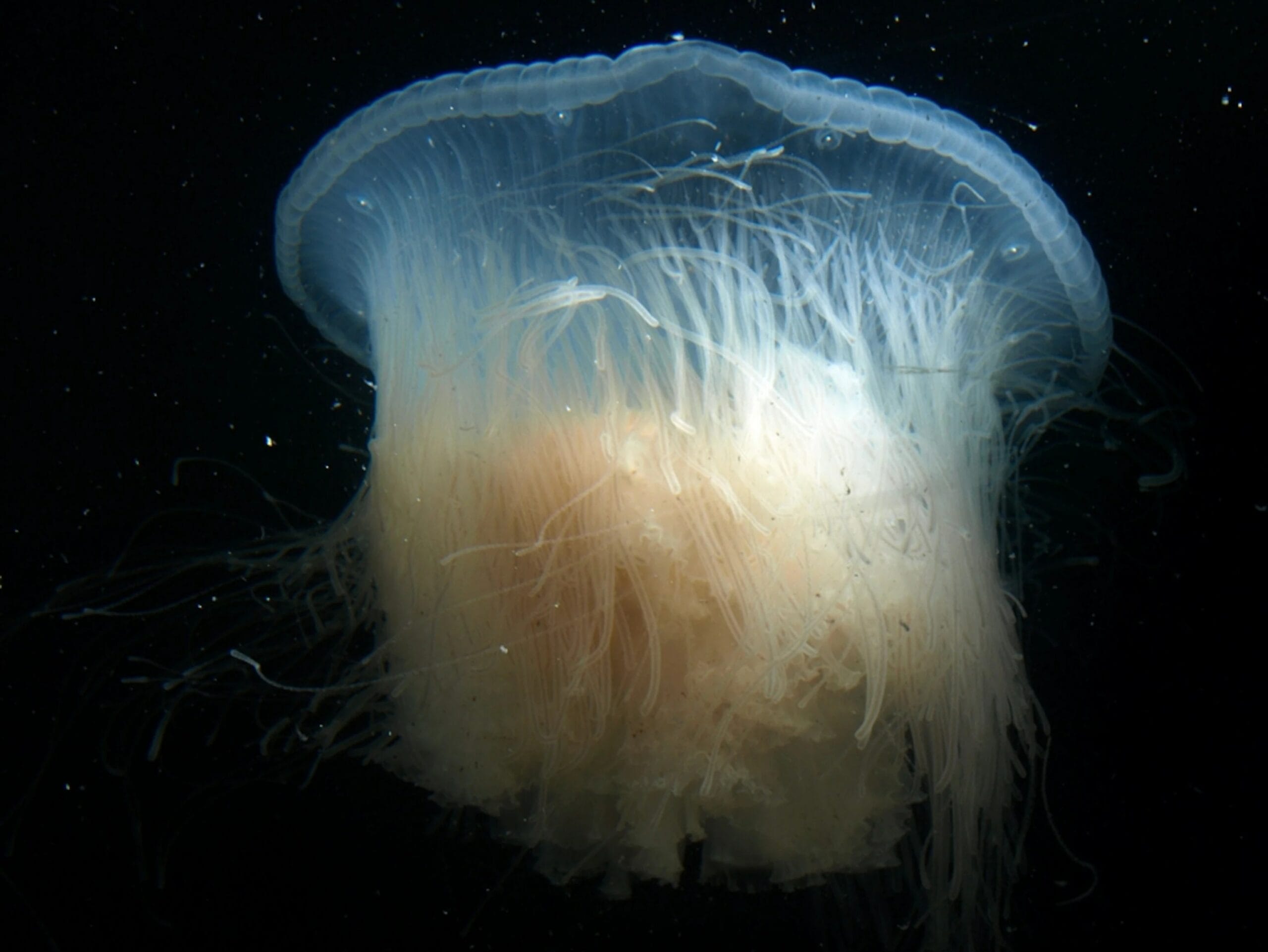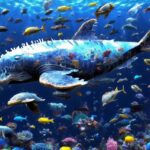The pink meanie jellyfish ( Drymonema larsoni). It’s a name that conjures up images of a creature straight out of a science fiction novel, and with good reason! This recently discovered jellyfish species is capturing the attention of scientists and ocean enthusiasts alike. Journey with us to the depths of our oceans as we unravel the mysteries of this captivating predator, exploring its unique characteristics, peculiar diet, and the crucial role it might play in the delicate balance of marine ecosystems.
A Jellyfish That Eats Jellyfish?
Discovered in the Gulf of Mexico in 2000, the pink meanie jellyfish wasn’t officially recognized as a new species until 2011. These mesmerizing creatures are instantly recognizable by their massive size and distinctive pink hue. They can grow to be remarkably large, with bells (the main body) sometimes exceeding three feet in diameter—imagine a jellyfish the size of a hula hoop! But that’s not all. Their tentacles, trailing gracefully behind, can stretch an astounding 70 feet in length—that’s longer than a bowling lane!
And what do these massive creatures use their enormous size and impressive reach for? Hunting jellyfish, of course! Unlike many jellyfish species that primarily feed on tiny plankton, the pink meanie has developed a taste for a more substantial meal: other jellyfish, especially moon jellies ( Aurelia sp.). Scientists believe this unique feeding behavior could make them a keystone species, meaning they help regulate the populations of other jellyfish in their ecosystem.
The Pink Meanie: More Beauty Than “Mean”
Despite their intimidating name and formidable size, pink meanie jellyfish aren’t considered a significant threat to humans. While they do possess stinging cells (nematocysts) on their tentacles—like most jellyfish—their sting is more of a painful nuisance than a serious danger.
Encounters with a pink meanie might cause discomfort and skin irritation similar to a bee sting, but it’s unlikely to be life-threatening. However, reactions to stings can vary from person to person, and some individuals may be more sensitive than others. As with any marine life, it’s always best to admire these magnificent creatures from a safe distance.
The Elusive Pink Meanie: A Scientific Enigma
Because the pink meanie jellyfish is a relatively new discovery, much about its life cycle and behavior remains shrouded in mystery. Scientists are actively studying these creatures to learn more about their reproductive habits, lifespan, and the full extent of their role in the marine ecosystem.
Some intriguing questions researchers are trying to answer include:
- How do pink meanies reproduce, and where do they spawn?
- What is their average lifespan in the wild?
- How will climate change and ocean acidification impact their populations?
- Could their venom hold potential medical applications?
As we delve deeper into the world of the pink meanie jellyfish, each new discovery brings us closer to understanding these fascinating creatures and their importance in the intricate web of life within our oceans.
Pink Meanie Jellyfish: Guardians of Balance?
The emergence of the pink meanie jellyfish as an apex predator in the jellyfish world raises important questions about their potential impact on delicate ocean ecosystems. As their populations continue to be monitored, scientists are eager to determine if their presence will help control jellyfish blooms—a phenomenon that can disrupt marine food webs and have ecological and economic consequences.
The study of the pink meanie jellyfish also offers valuable insights into the adaptability and evolution of marine life. Their specialized diet, unique hunting strategies, and impressive size make them a captivating subject for researchers working to unravel the secrets of our oceans.
A Call to Action: Protecting Our Ocean Giants
The pink meanie jellyfish, with its remarkable size, beauty, and crucial role in the marine ecosystem, reminds us of the incredible diversity and wonder that lie beneath the ocean’s surface. As we continue to learn more about these fascinating creatures, it becomes increasingly important to protect them and their habitat.
You can be part of the effort to conserve the pink meanie jellyfish and other marine species by:
- Supporting sustainable seafood practices.
- Reducing plastic use and properly disposing of waste.
- Advocating for policies that protect our oceans.
- Participating in citizen science initiatives to report pink meanie sightings.
By understanding and appreciating the intricate connections within our oceans, we can help ensure these magnificent creatures thrive for generations to come.
Discover the fascinating world of the pint-sized philippine tarsier. Embark on an enthralling journey to meet the enigmatic pinta island tortoise, a creature that defies time.
















